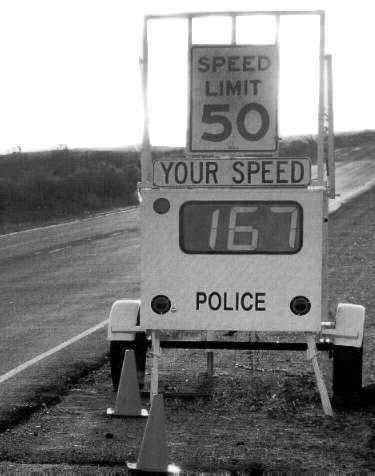- Posts: 6393
- Thank you received: 18
Is every speed limit too low
- LOL
-

- Mountain Legend
-

If you want to be, press one. If you want not to be, press 2
Republicans are red, democrats are blue, neither of them, gives a flip about you.
Please Log in or Create an account to join the conversation.
- LOL
-

- Mountain Legend
-

- Posts: 6393
- Thank you received: 18
If you want to be, press one. If you want not to be, press 2
Republicans are red, democrats are blue, neither of them, gives a flip about you.
Please Log in or Create an account to join the conversation.
- PrintSmith
-

- Mountain Legend
-

- Posts: 5679
- Thank you received: 40
Please Log in or Create an account to join the conversation.
- LOL
-

- Mountain Legend
-

- Posts: 6393
- Thank you received: 18
If you want to be, press one. If you want not to be, press 2
Republicans are red, democrats are blue, neither of them, gives a flip about you.
Please Log in or Create an account to join the conversation.
- otisptoadwater
-

- Mountain Legend
-

- Posts: 7923
- Thank you received: 70
I can explain it to you but I can't understand it for you.
"Any man who thinks he can be happy and prosperous by letting the Government take care of him; better take a closer look at the American Indian." - Henry Ford
Corruptissima re publica plurimae leges; When the Republic is at its most corrupt the laws are most numerous. - Publius Cornelius Tacitus
Please Log in or Create an account to join the conversation.
- coveralls
-

- Tourist
-

- Posts: 9
- Thank you received: 3
Please Log in or Create an account to join the conversation.
- swansei
-

- Mountain Folk
-

- Posts: 115
- Thank you received: 4
And don't forget about speed and impact. I witnessed an accident recently where one driver turned left not seeing the oncoming vehicle and even though they weren't going that fast, it totaled both vehicles, fortunately no serious injuries. Imagine if they were moving faster.
"There are two ways to conquer and enslave a nation... One is by sword...The other is by debt." John Adams 1826.
Please Log in or Create an account to join the conversation.
- LOL
-

- Mountain Legend
-

- Posts: 6393
- Thank you received: 18
PrintSmith wrote: If only thy wit were as sharp as thy tongue. I assure thee that thou art the only one pulling on thine third leg.
Ha!
I would challenge thee to a battle of wits, but I see thou art unarmed!
Away you moldy Rogue, you FishMonger, Away! Go mend! Go Mend!
LOL
If you want to be, press one. If you want not to be, press 2
Republicans are red, democrats are blue, neither of them, gives a flip about you.
Please Log in or Create an account to join the conversation.
- PrintSmith
-

- Mountain Legend
-

- Posts: 5679
- Thank you received: 40
With all due respect coveralls, no one is offering the premise that anyone "needs" to drive 75-85 mph up here. You don't get to create your own argument to argue against simply because it's an easier point to debate for you.coveralls wrote: As a Mother that has raised children to drive up here, I have to say that I think the speed limits are to high. I see no reason why anyone would need to drive 75-85 miles an hour unless there is a serious emergency. I am a nurse, I worked ER for years and I have seen more than my share of deaths and life time injuries. Just ask yourself, is that extra time you "might" save worth yours, your family or someone else family worth it? Bottom line, I see no reason for higher speed limits. Those that are going to go "fast" are going to do it no matter what the sign says and you know what?, from my experiences, it has always been the speeder that seems to leave the accident while others no longer breath. Just my humble thoughts and opinions.
What you think, what you feel, what you believe, is not really germane to the discussion at hand. What you can demonstrate with facts is germane. The article found at the link in the OP quite clearly makes the case that in the vast majority of instances the speed limit can be raised by 10 mph and there will be little, if any, change in the regular speed of the traffic on that road. This is because the people driving on that road have effectively nullified the number on the sign with their actions on a regular and continuing basis. This is just as true for 285 as it is for the roads contained in the article.
The article makes the case that the proper speed limit for any road is more properly determined by running a study on the road and finding out what speed 85% or more of the drivers operate their vehicles at or below. It demonstrates that setting the speed limit below this number fails to reduce the average speed of traffic and at the same time increases, not decreases, the number of accidents on the road. When the speed limit is set according to this formula the speed of traffic is more uniform, which makes it safer for everyone traveling on that road. Traffic study after traffic study bears this out. It is not a matter of opinion, it is a matter of fact.
The fact of the matter is the effective speed limit on 285 through The Luge is closer to 55 than it is to 45 as this is the speed at which the majority of the drivers are navigating the road. The effective speed limit on the 4 lane sections of 285 is closer to 65 than it is to 55 for the same reason. Putting 55 and 65 on the signs isn't going to appreciably alter this fact. That, too, is something traffic study after traffic study demonstrates. This isn't what I think, or what I believe, or what I feel, it is the hard data that results when a scientific study is undertaken, which is also the point made in the article that is linked to in the OP.
I learned to drive on these roads. I have been driving on them for over 35 years now. I know for a fact that the cars made today handle better and stop faster than the vehicles I was driving 35 years ago did. I know for a fact that the tires today are better than the ones I was driving on 35 years ago were. I know for a fact that the cars made today protect the occupants better than the cars made 35 years ago did. I also know for a fact that traffic volume on those roads is greatly increased over what it was 35 years ago.
Here, if you'll pardon the pun, is where the rubber meets the road. What constitutes a safe and prudent speed is variable rather than constant. There are times when it would be insane to drive 55 mph on 285 even though that is what the sign says is a safe and prudent speed to operate a motor vehicle at on that road. However, there are also times when a higher speed is also safe and prudent. Reasonable people, as you and I are, are more than capable of determining which standard applies on any given trip. This is demonstrated on a daily basis. I would venture that nearly 100% of the vehicles traveling 285 on any given day manage to navigate the road without any difficulty and that at any given moment at least 50%, if not closer to 70% or more, of them are exceeding the posted limit by an average of about 10 mph. At night, the average speed drops 5 mph or so. When volume is very heavy, as it is nearly every Friday evening and Sunday afternoon this time of year, you are lucky if you get above 25 mph on certain sections of 285 even though the speed limit is 55. You'd be a lunatic to drive the speed limit when 85% are doing 25 or 30, wouldn't you? So what makes anyone believe that the number on the sign is what determines what a reasonable and prudent speed is? When 85% of the vehicles on the road are doing around 65 mph, isn't it just as ludicrous to believe that the number on the sign is what determines what a reasonable and prudent speed is as it is in the other circumstance?
Please Log in or Create an account to join the conversation.
- Venturer
-

- Mountain Legend
-

- Posts: 877
- Thank you received: 0
Please Log in or Create an account to join the conversation.








